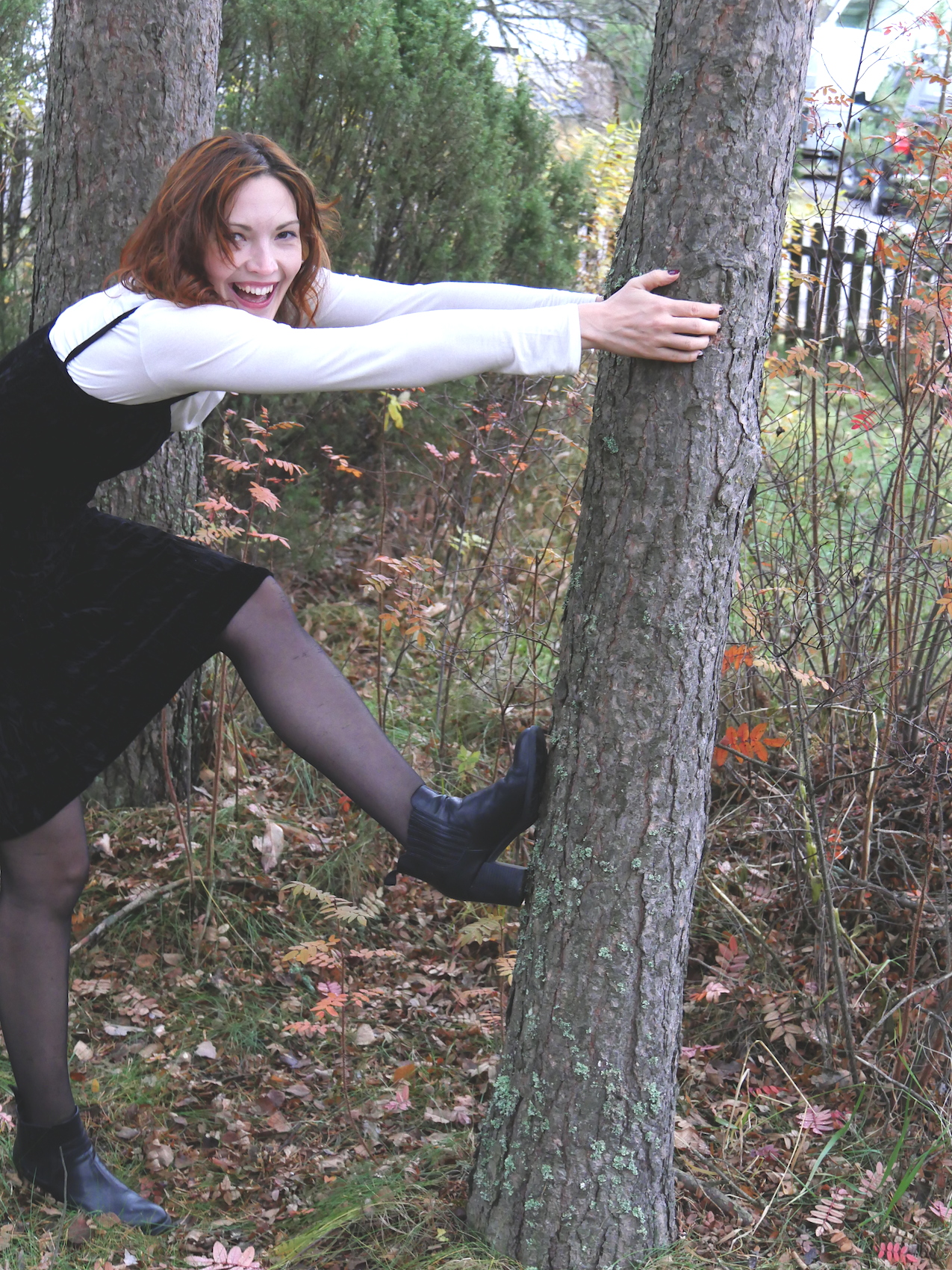Of course you have heard talk about slow fashion. This is what we should be doing, right? But what is it all about?
Last weekend I read a couple of interesting articles on slow fashion. Those articles inspired me to write this blog text about the phenomenon. Also, it kind of got me to do a little DIY project, too.
In short, the term slow fashion means lengthening the life cycle of a clothing. In the production and design process this means choosing quality materials and maintening a zero waste principle when cutting patterns. As for us consumers, our task is to sustain the clothes that we own, repair and modify them, and in the end recycle them properly.
Slow fashion is not directly to be understood as an opposite to fast fashion, because the idea of slow fashion is not to give up dressing fashionably. It is not about that boring talk about classic clothes and the idea of a basic wardrobe that you need to own. For most of us this isn’t working. We do want to look stylish and fashionable. Slow fashion is not intended to ignore these facts. Above all we shouldn’t underestimate the power of clothing: it can be considered as our social skin between our body and sociocultural environment. Anyway, what has made the concept of slow fashion a bit boring is this: it has been associated with hippie green clothing and odd DIY projects, which I am not personally interested in. I do read fashion magazines and I do get excited about trying their style tips, because I just love dressing up. And for my job I write fashion articles and give style tips, so I am more a part of the fashion industry rather than looking it from the outside. Today I just intend to find other solutions and more and more I try to give old clothes a fashionable life, if you want to put it that way.
And this is where we come to the core of slow fashion; it is more about positive attitude towards dressing up, changing attitudes and of course lengthening the life of clothes. This we can all do, right? If we use only 10 % of the contents of our wardrobe, we have a 90 % chance to find something “new” in our closet. This is innovative thinking that I am talking about.
My black velvet dress that you see in the picture is a good example of slow fashion action. I found the dress in a local flea market. The velvet dress was a size XL, but with a little modification I made it to fit me. As you might have seen, this autumn is all about velvet, and I have been thinking of making a velvet dress for myself for a while. Of course I could have bought a new one. It would have been easy, but I wanted to find another solution: use an old dress and give it a new life. At the same time I created a story behind this dress, which I am sharing with you now. This 1€ dress is definitely more valuable than if I had bought the same style dress in a high street store.
The French term bricolage is technically what I have been doing. It is one way to do slow fashion. When mixing up old and new, you are an innovative consumer, innosumer, who doesn’t want to follow the speedy fashion industry, but who wants to modify clothes and find new solutions to be fashionable and stylish.
To be more creative, more inventiveness and using more practical thinking – those are the values that I want to represent with my social skin. Of course my little bricolage is a simple and easy step, but it is a start towards slow and more meaningful fashion.
References:
Koskennurmi-Sivonen, Ritva & Laamanen Tanja-Kaarina 2014: Muodin hidastaminen. Teoksessa Kättä pidempää – Otteita käsityön tutkimuksesta ja käsitteellistämisestä. Toim. Seija Karppinen, Anna Kouhia & Erja Syrjäläinen. Helsingin yliopisto.
Niinimäki, Kirsi 2007: Eettisen kuluttajuuden tulevaisuudenkuva. Artikkeli julkaistu Futura-lehdessä, 4/2007.
Siegle, Lucy 2011: To Die For. Is Fashion Wearing Out the World. London: Fourth Estate.
Read more:
Wardrobe analyze – and how to extend the life of clothes
